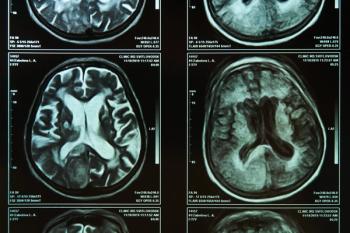
Eating Disorders in LGBTQ+ Patients: Recommendations and Clinical Pearls
How are eating disorders different in LGBTQ+ patients compared with cisgender heterosexual patients? How can you best help manage eating disorders in this patient population?
CLINICAL CONVERSATIONS
According to research, LGBTQ+ youth experience significantly greater rates of eating disorders compared with their heterosexual and cisgender peers.1 Psychiatric Times sat down with Melissa Spann, PhD, CEDS-C, a certified eating disorder specialist and chief clinical officer at Monte Nido, to learn more about best practices in treating this patient population.
PT: What advice would you give to clinicians to help them manage eating disorders in LGBTQ+ patients?
Melissa Spann, PhD, CEDS-C: As part of a marginalized population, individuals in the LGBTQ+ community often seek treatment with multiple medical and mental health concerns. Body incongruence, body dysmorphia, body image distress, and ultimately eating disorders can develop because of life stressors such as discrimination, social isolation, and internalized stigma that impact overall health. The most important factor when treating this population is to explore the intersectional identities that each patient presents.
Primary goals for treatment should be agreed upon by patient and provider and include medical and psychiatric stabilization to incorporate weight restoration (if needed) and symptom cessation, followed by nutritional and therapeutic goals that are aligned with working toward healthier relationships with food and body.
It is important to use inclusive language and offer a safe space for self-exploration. This can be done by offering pronouns when introducing yourself, having materials in your office that represent a gender inclusive space, and having paperwork that is inclusive to everyone.
PT: What eating disorders do you most commonly see in LGBTQ+ patients?
Spann: From our published paper in 2020, 25% of our patients identified as LGBTQ+, and our most recent data suggests over 35% of patients identify as LGBTQ+.2 Our recent comprehensive outcomes based on 10,000 patients over the past 5 years show that 35% of adults and 37.7% of adolescents identify as LGBTQ+. Within our programs, eating disorder diagnoses differed significantly for LGBTQ+ patients. Overall, we saw higher rates of other specified feeding or eating disorder and lower rates of anorexia nervosa-restricting vs our patients who do not identify as LGBTQ+. National statistics on eating disorders also show that within LGBTQ+ communities, more research is needed on subpopulations, such as those who identify as transgender, because they may be at higher risk for eating disorder development.
PT: How is this patient population different than say, LGBTQ+ patients with a different disorder like schizophrenia or major depressive disorder?
Spann: LGBTQ+ individuals face unique challenges and stressors, like discrimination, stigma, and social isolation, that put them at higher risk for a range of mental health issues, including eating disorders. In particular, we know that patients in the LGBTQ+ community within our programs had significantly higher scores on the PCL-5 as well as significantly higher prevalence rates (63%) of presumptive current posttraumatic stress disorder (PTSD) when compared to cisgender heterosexual individuals (45%).3 Additionally, the LGBTQ+ group also reported greater depressive and trait anxiety symptoms. Overall, these individuals present to have greater severity of an eating disorder. This combination creates more layers to navigate during treatment. We also believe that concurrent treatment of the client’s eating disorder and cooccurring conditions can be beneficial for individuals struggling.
PT: Only 1 in 10 individuals with eating disorders will get treatment.4 How can clinicians encourage awareness and reduce stigma around eating disorders?
Spann: There are many ways clinicians can encourage awareness and reduce stigma around eating disorders. Engaging in community education initiatives, seminars, and informational materials that highlight the seriousness of eating disorders can help to shift public perception and emphasize that eating disorders are serious mental health conditions, not choices or phases. Clinicians can also advocate for comprehensive training for health care providers to ensure early detection and compassionate, informed care, reducing some of the anxiety clients might feel when seeking help.
PT: What is Monte Nido’s “Hidden” campaign?
Spann: We recently launched a national branded awareness campaign called “
PT: Are there any other clinical pearls or recommendations you would like to share?
Spann: Trauma is a contributing factor in the development of eating disorders, and we have found in our research that the prevalence of PTSD is significantly higher among LGBTQ+ individuals compared to non-LGBTQ+ individuals, with rates at 63% vs 45% respectively.5 This underscores the critical need for trauma-informed care to concurrently manage trauma and the eating disorder while addressing the distinctive experiences and challenges faced by the LGBTQ+ community. Social isolation is a common issue within LGBTQ+ community as well as for individuals struggling with an eating disorder. A critical part of treatment is to engage patients with both professional and peer community supports as part of the path to recovery.
Additionally, programs that offer specialized programming, like Monte Nido Walden’s
PT: Thank you!
Dr Spann is chief clinical officer at Monte Nido, a certified eating disorder specialist, and clinical supervisor who oversees the clinical operations and programming for over 50 programs across the US. She is also a member of the Academy for Eating Disorders and the International Association of Eating Disorder Professionals where she serves on the national certification committee, supervision faculty, and is on the board of her local chapter.
References
1. Parker LL, Harringer JA.
2. Brewerton TD, Suro G, Gavidia I, Perlman MM.
3. Brewerton TD, Gavidia I, Suro G, McShane M. Sexual and gender minority individuals present with higher rates of presumptive PTSD in a residential treatment setting for eating disorders. Poster. Monte Nido & Affiliates. Accessed July 3, 2024.
4. Social and economic cost of eating disorders in the United States of America. Deloitte. 2020. Accessed July 3, 2024.
5. Brewerton TD, Gavidia I, Suro G, Perlman MM.
Newsletter
Receive trusted psychiatric news, expert analysis, and clinical insights — subscribe today to support your practice and your patients.














